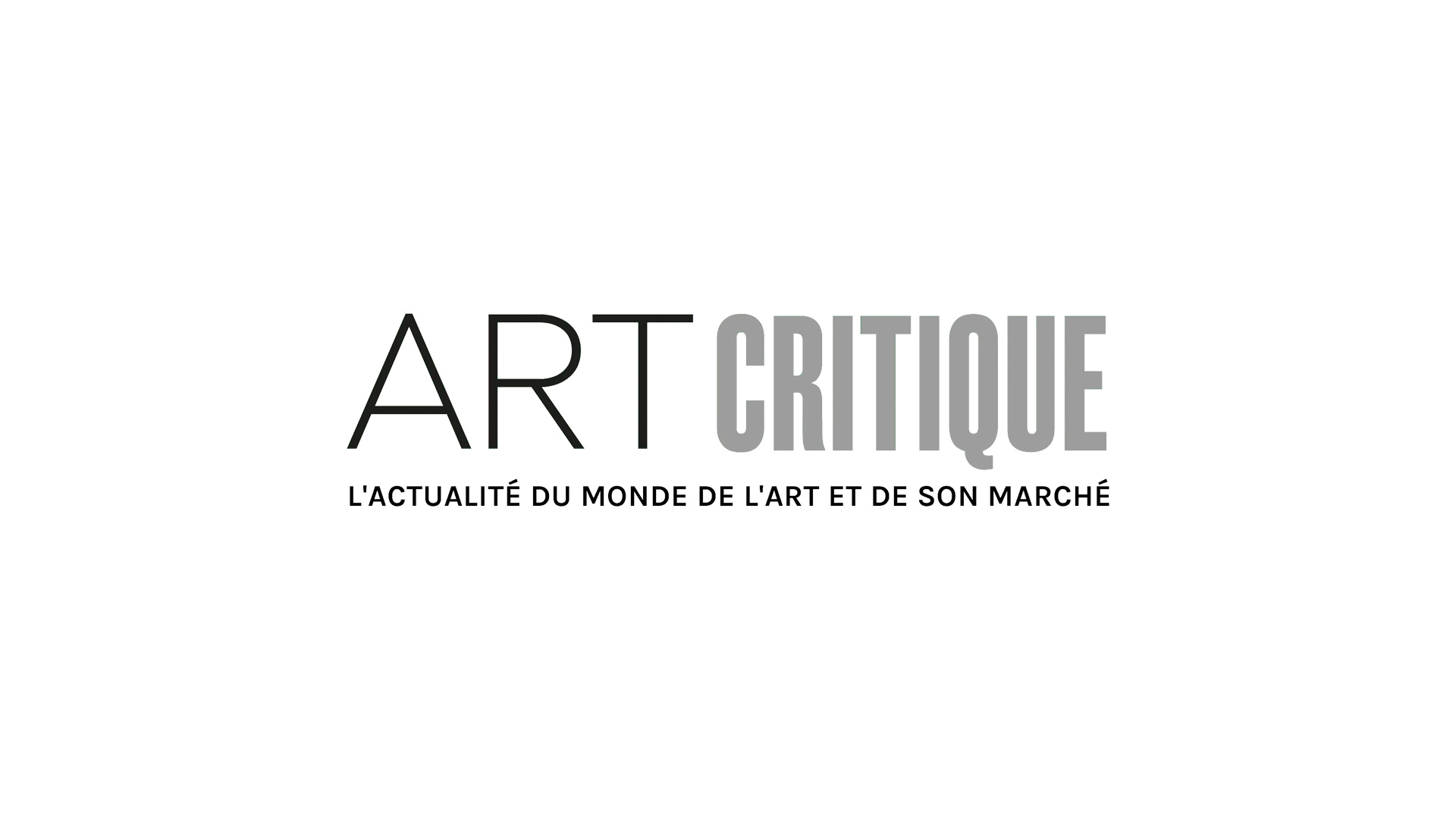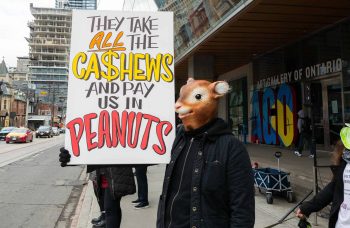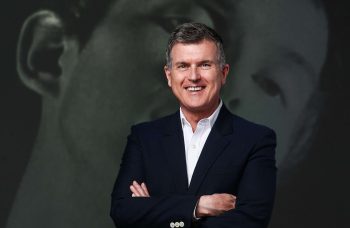The American painter Robert Ryman died on February 8, 2019. He passed away at his home in Greenwich Village in New York at the age of 88. At this time Art Critique would like to take a close look back at his self-taught career and his work.
Robert Ryman was born May 30th, 1930 in Nashville, Tennessee where he studied saxophone at Cookeville Polytechnic Institute (1948-1949) and then at George Peabody College for Teachers in Nashville (1949-1950). Later he joined the American reserve army stationed in Alabama where he also played in the military band. In 1952, he moved to New York to hone his craft as a saxophone player and to work as a musician. At the age of 20 and without money, he took lessons for $5 each with jazz pianist Lennie Tristano and then played small gigs to survive. Ryman was also a regular visitor to many of Manhattan’s museums and galleries. In 1953 he found a job working as a security guard at the Museum of Modern Art (MoMA). While working there he got to know the work of the grand masters of modern art like Matisse, Mondrian and Malevich as well as abstract expressionists like Rothko and Pollock whose pieces were increasingly included in museum collections. It was also at MoMA where he met others who, like himself, had day jobs but would later become important names in minimalism and conceptual art: Dan Flavin, known for his geometric arrangements of fluorescent tubes, worked as a caretaker, Sol LeWitt, known for his open cube structures, worked in the bookstore and Robert Mangold, whose paintings of coloured shapes adorned the walls of the biggest museums, worked in the library. Lucy Lippard, who would later establish herself as a major art critic of these contemporaries and whom Robert Ryman would marry in 1960, also worked at the museum’s library.
Stimulated by his new friendships, in 1954 young Ryman decided to try his hand at painting; one of his paintings from that time was even shown as part of an exhibit highlighting the work of the museum’s staff in 1958. But it was not until 1966 that he made a name for himself by taking part in a famous collective called Systemic Abstraction organized by the Solomon R. Guggenheim Museum. Coordinated by the influential British art critic Lawrence Alloway (famous for having invented the concept of “mass popular art” which would eventually be more commonly known as Pop Art), this explosion lay the groundwork for the movement that would evolve into minimalism. This event disrupted the Guggenheim’s image as a museum, which under the leadership of Hilla Rebay, had always supported a line-up that was abstract but gravitated toward the spiritual, Alloway, on the other hand, adhered to a modernist vision. With this first long-term, technical show, he recognized the emergence of geometric abstract painting that concentrates on simple patterns used in a repetitive process. That is why the work of Robert Ryman can often be found alongside that of Frank Stella, Kenneth Noland, Ellsworth Kelly, Robert Mangold, Neil Williams, Jo Baer and Agnes Martin.
Robert Ryman’s contribution to the emergence of what would be known as “systemic painting” in reference to the methodical organization unique to these new painters, led to his own public recognition. He held his first solo exhibit at Paul Bianchi Gallery in New York the following year. Although this exhibition might have been viewed as a commercial failure (it did not yield any sales), it nevertheless allowed him to become known and, starting in 1968, to be shown widely in Europe. His first foreign exhibition, modestly entitled Robert Ryman, was hosted by the Heinrich Friedrich Gallery in Munich, very popular with avant-garde collectors.
After this initial international recognition, the artist’s work would be shown widely in Düsseldorf (Konrad Fischer Gallery), in Paris (Yvon Lambert Gallery) and in Milan (Françoise Lambert Gallery). In 1969, Robert Ryman participated in the now legendary exhibit called Live in Your Head, more commonly known by its subtitled-name When Attitudes Become Form, in the Kunsthalle Bern. This exhibition, which was designed by curator Harald Szeemann marked the birth of modern art by showing unfinished works related to processes specific to conceptual art, actions typical of performance art and settings characteristic of Arte Povera. Although he did not actually belong to any of these three movements, Ryman’s work was shown alongside Carl Andre, Joseph Beuys, Mel Bochner, Eva Hesse, Fred Sandback, Lawrence Weiner and many others, while Daniel Buren, who had not been part of this collective, made his own series of wild displays at nearby art centres.
After many gallery shows as a solo artist or as part of a group in other institutions, Robert Ryman got his first solo gallery show in a museum—the prestigious Guggenheim in New York. That same year, in 1972, he also participated in the 5th Documenta de Casse exhibit organized by Swiss curator Harald Szeemann. He was re-invited in 1977 and again in 1982. He also took part in the 1976 Venice Biennale and the Whitney Biennale in 1977, 1985 and 1987. In 1993, MoMA, the institution where he showed his first paintings as part of staff exhibition, dedicated a retrospective to him.
Robert Ryman became known for his white paintings which, like other artists of the time such as Agnes Martin, very often were square. Within this strict field, limited to one colour and format, he committed himself to producing multiple variations on that theme so that his pieces would not be seen merely as monochromes. He tried using different media (working not only on canvasses or wood but also vinyl, glass and even fibreglass) in order to modifier the white tone as he explained in an interview given to Art Forum magazine in 1971. “The medium is always used. The grey of the steel shows through; the brown of the corrugated paper shows through and the linen shows through just like cotton (it seems whiter than the paper). Everything is taken into consideration, there is nothing monochromatic about it at all”. He often changed materials (in addition to paint, which sometimes was industrial and designed especially for artists, he tried using enamel, caustic, solvent and casein) and experimented with different movements by sometimes using a brush or a knife to create smooth, flat areas like thick impasto. Ryman’s paintings revealed their creative process demonstrating the era’s sense of the relationship between surface and media. The support is always partially visible, even the first coloured layers. In 1986, he explained it thus, “My intention has never been to make white paintings. And it still isn’t. I don’t even think that I paint using white paint. White is used only to expose a painting’s other elements. White allows other things to become visible”. White, during the time when Ryman began creating his white cubes, also referred to the walls of the exhibition space. Tone on tone, Ryman’s canvases adhere to a modernist approach, questioning the limits of the pictorial surface and its relationship to the surface of the wall, playing with the space and the light. If Ryman has always rejected the classification of his paintings as monochromes, he has not accepted the minimalist reading of his work either (once again, the parallels to A. Martin are striking). Robert Ryman vowed to make a “concrete art” and called himself a “realist”. While he may have used industrial materials like metal, Plexiglas or aluminium, he never abandoned his commitment to art that was “handmade”.
Robert Ryman was able to combine the minimal radicalism of a format and a single colour with the sensual expressiveness of the “touch” while always considering the relationship between the painting and its exhibition space. He brought together issues questioned by different artistic movements of his time to create his own individual repertoire.






